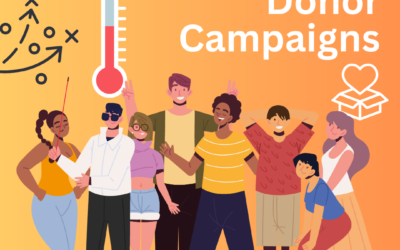A new look at an old problem can suggest different solutions. Any business, for-profit or nonprofit, would like insightful analysis of what is driving online engagement with their clients. For years, we’ve been using analytics tracking to help us understand what traffic comes our way from search engines (as “organic” traffic, if the search engine link wasn’t paid for), what comes from social media links, and what is “direct” traffic. Direct traffic occurs when someone types in your website address because they knew it existed, or because they have your address bookmarked on their computer, or because they have something in front of them (perhaps even something on paper) which gave them the link.
A new Atlantic article has created quite a buzz for suggesting that much direct traffic is, in all likelihood, really what The Atlantic’s Alexis C. Madrigal calls “dark social” traffic. Whether you have ever seen web analytics (super fun for data geeks, but perhaps more like agonizing for some others) or not, you no doubt understand that someone typing “nonprofitquarterly.org” into their browser may be doing so because they got a mailer or remembered a friend telling them verbally to check it out. Almost no one, however, is going to type a page-specific address for a really complex permalink, such as http://www.nonprofitquarterly.org/philanthropy/9091-evolutionnot-revolutionis-the-course-of-online-giving.html.
If the page associated with that complex link experiences “direct” traffic, we can reasonably assume it’s a link that we or someone else somehow sent to that reader; we just aren’t able to track exactly what happened in the analytics software. The traffic could be derived from an e-mail or an online chat with a friend. As such, it’s social, but not from anything we can detect—unless we ask for help from our supporters.
Large, for-profit entities could ask for help, too, but nonprofits have a different kind of relationship with our supporters. They want us to succeed in getting the word out, and if we tell them why it is valuable for us to measure “dark social,” those supporters are likely to help us. As with any support we seek for our nonprofits, we need to make a simple and compelling case as to why understanding how our online engagement works matters. I may not care about the analytics efforts of the Atlantic (though they will see the link to their page as coming from Nonprofit Quarterly…Hi, Atlantic people!), but I do care about my local community development agency getting the word out on a new project and helping them to be effective. So, what can you do to figure out your “dark social” sources?
First, you can use custom analytics links for different campaigns. If you’re using our fine friends at Google for your analytics tracking, you can create different custom, trackable links to the same web address. If you want a lot of people to read or use the same page, you may want to know what drove people to the link. Stuff coming from Facebook or Twitter is easy, but what about links from your ally organizations’ e-mail newsletter? And all the people who read that e-news and share it? If each post has a custom link to your desired destination page, we get more data about the source, and know where to concentrate our efforts. Your nonprofit has to ask others to use those custom links when they share your stuff, so get the word out that you need your friends to use specific links—that you’ll provide—when sharing your stuff.
Also, ask your readers—really ask them—to use your AddThis.com links for sharing. The “dark social” theory is that when a lot of folks read what you said or heard your call to action, they just copied the address bar of their web browser to pass it on to others. Easy to do, after all. They can paste that link into an e-mail or their own group distribution list or whatever and we won’t know where the resulting traffic came from. If you use a service like AddThis on your pages, trackable links can be provided and can help you know more about the origin of your traffic. This is where nonprofits have an advantage over others on the Web. Our supporters understand we need to know how to reach more people, and they may go that extra step to help us if we ask nicely, please and thank you.
How sophisticated any nonprofit can get in understanding and amplifying its Internet reach is just a matter of how much staff time and energy you can devote to the effort. There are great resources to offer us a better understanding of our traffic, and these can help us grow what works and cut what doesn’t. We just need to decide how important this is and then give it the right amount of energy. In doing so, let’s not overlook the potential for our supporters, when properly informed, to be our crowd-sourced analytics allies.
Originally published at Nonprofit Quarterly.
